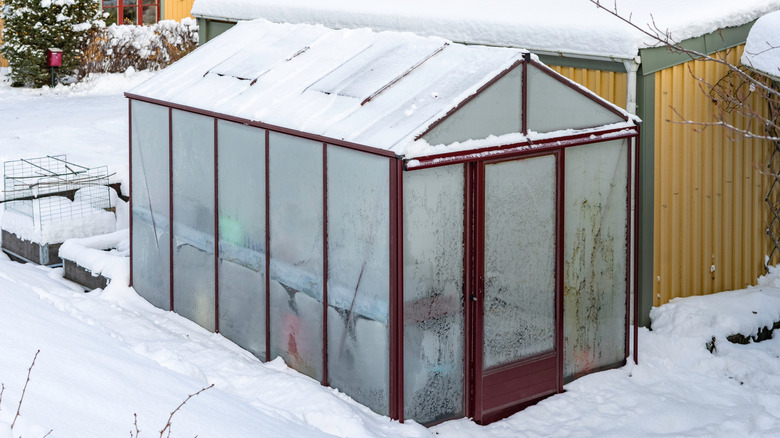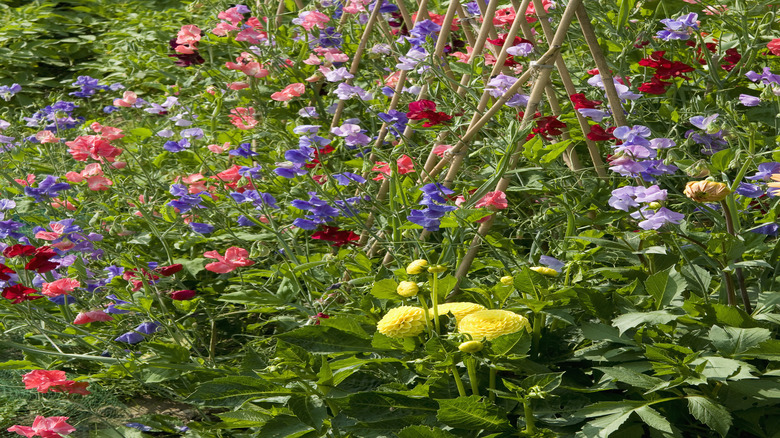The Sweet Flower You Should Start Seeding In Winter For A Beautiful Spring Display
There are two types of gardeners: those who enjoy the slowness of winter and those who want to get back in the dirt as soon as possible. The truth is there are plenty of garden tasks to keep you busy despite the cold, particularly when it comes to preparing for the spring. Sweet pea (Lathyrus odoratus) will create a beautiful spring display — as long as you start sowing this plant in late winter or early spring.
Sweet pea is an annual flower with a perfectly apt name: The plant is related to green peas, but the flowers have a lovely sweet scent and come in a wide range of colors both vivid and pastel. It's a popular flowering plant that blooms all summer long and grows quickly, continuing to do so as long as the flowers are harvested and deadheaded. Some varieties are vining and will cover an entire trellis; others are hedges, ideal for borders and walkways. Despite being related to peas, sweet peas are not edible and are poisonous in large amounts.
Though a hardy plant, it can be tricky for some gardeners to grow these flowers from seeds. One common mistake is planting too late in the season. Sweet peas like cooler weather; if you wait until the middle of spring or even summer, the young plants will struggle to grow or not produce as many flowers.
When to plant sweet peas for best results
In USDA hardiness zones 1 to 7, start seeding sweet peas in the late winter or early spring, around late January to early March well before the last frost. In most cases, you'll need to start the seeds indoors six to seven weeks before the last frost, then move them outside as soon as the ground is soft and dry enough to work with. In USDA zones 8 to 10, start sweet peas in the late fall so they flower toward the end of winter or early spring.
To start sweet peas, soak the seeds overnight to encourage them to sprout more quickly. Place one to two seeds in each spot about half an inch below the soil. For indoor starts, use a seed tray at least 3½ inches deep, and place the tray in a bright spot that doesn't get too hot. The shoots will take up to two weeks to appear, depending on the soil temperature. When the plants are around 6 inches tall, pinch the tops off to encourage them to spread out. Before transplanting indoor seedlings to your outdoor garden, it's important to harden them by moving them to an unheated greenhouse or shady spot outside for a while.
Plant sweet pea seeds or seedlings outside as soon as the soil is workable in early spring; a light frost will not hurt them. Choose a sunny spot with well-draining soil and wind protection. Sweet peas need lots of nutrition, so dig a trench about four inches deep and fill it with compost or well-rotted manure before planting. Keep the soil consistently moist as your sweet peas grow.

